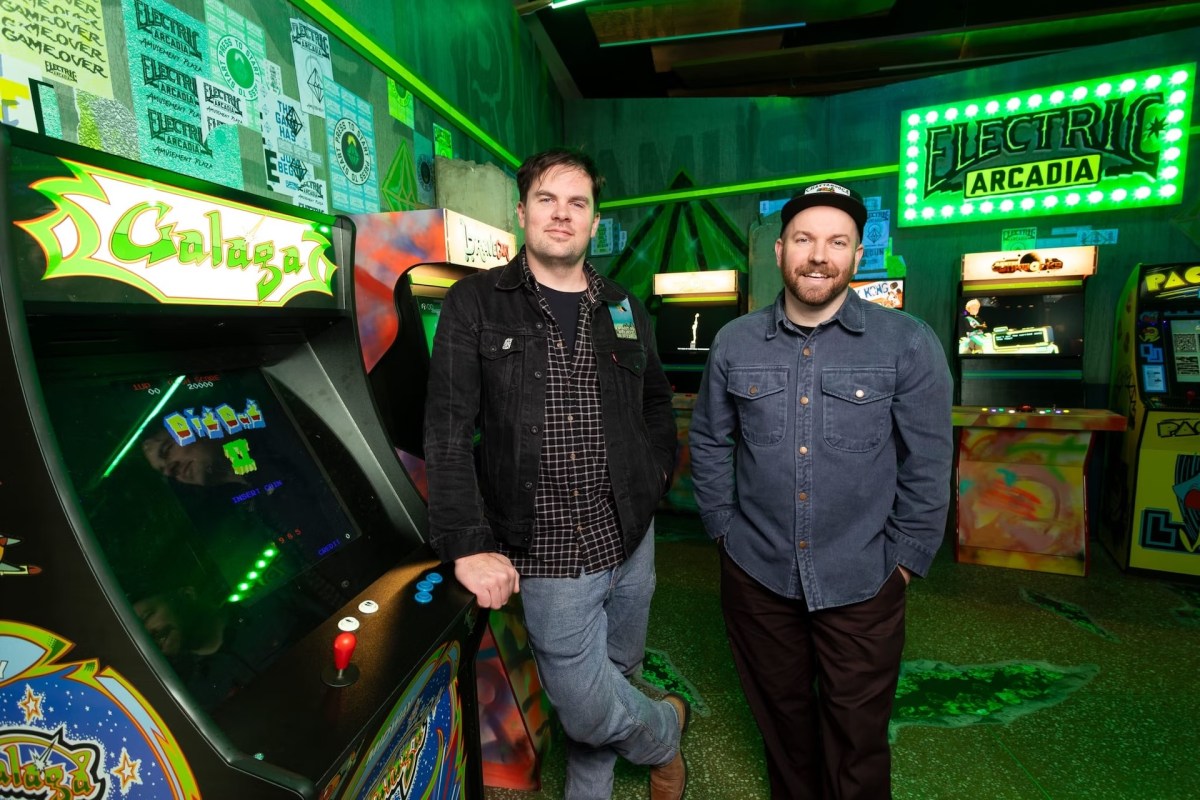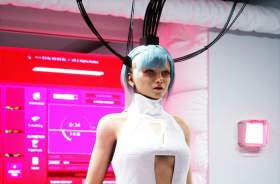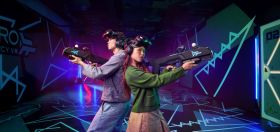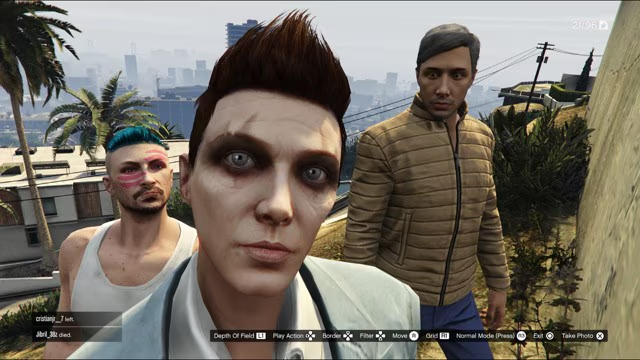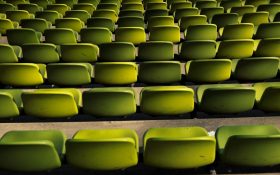ELECTRIC ARCADIA – quick links
The glass of what was once a Middle Eastern restaurant at Fed Square is plastered with neon yellow and green paste-ups. ELECTRIC ARCADIA is emblazoned across them in large, hand-drawn font.
Behind the carnival-punk exterior, lies a newly imagined arcade experience, created by Melbourne-based artist Callum Preston and creative media installation artist Louie Roots, as part of Melbourne International Games Week.
‘It was really exciting to be approached about something at Fed Square,’ says Callum Preston, the artist whom, with Louie Roots, designed the experience. ‘I mean, I’m Melbourne born and raised, and I can remember Fed Square being built and getting to see it from the flat lands that were here, into this.’
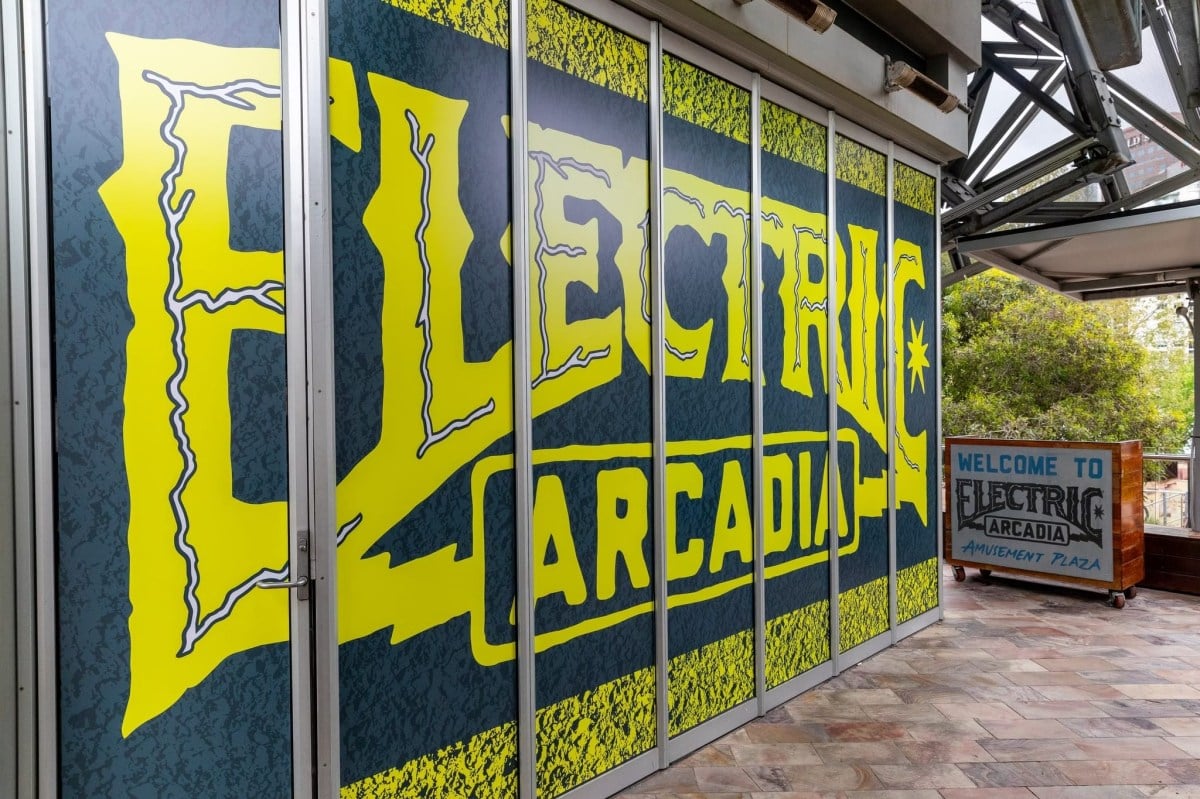
Preston was asked to create a vintage 90s arcade experience, to form part of Big Games Night Out – a free, one-night celebration of gaming culture at Fed Square, and a highlight of Melbourne International Games Week.
The prompt set Preston off on a journey to create ELECTRIC ARCADIA, an installation that is free to visit and play, and open for the week leading up to Big Games Night Out.
‘I thought: why not turn this very modern, iconic Melbourne space and create a space within that that’s a bit of a post-apocalyptic, sort of a nuclear fallout shelter, dungeon?’
ScreenHub: Final Episode: Road to Melbourne International Games Week 2025
ELECTRIC ARCADIA: collaboration
‘I was very excited about the building of a space [as part of Melbourne International Games Week],’ says Preston, ‘but games is not my forte’.
Preston creates art and installations to encourage the experience of nostalgia and play. His Videoland installation – complete with candy-coloured popcorn, 90s blockbuster film posters and rows of VHS videos, currently on display as part of the Joy exhibition at Melbourne’s Immigration Museum – recreated the experience of walking into a 90s video store.
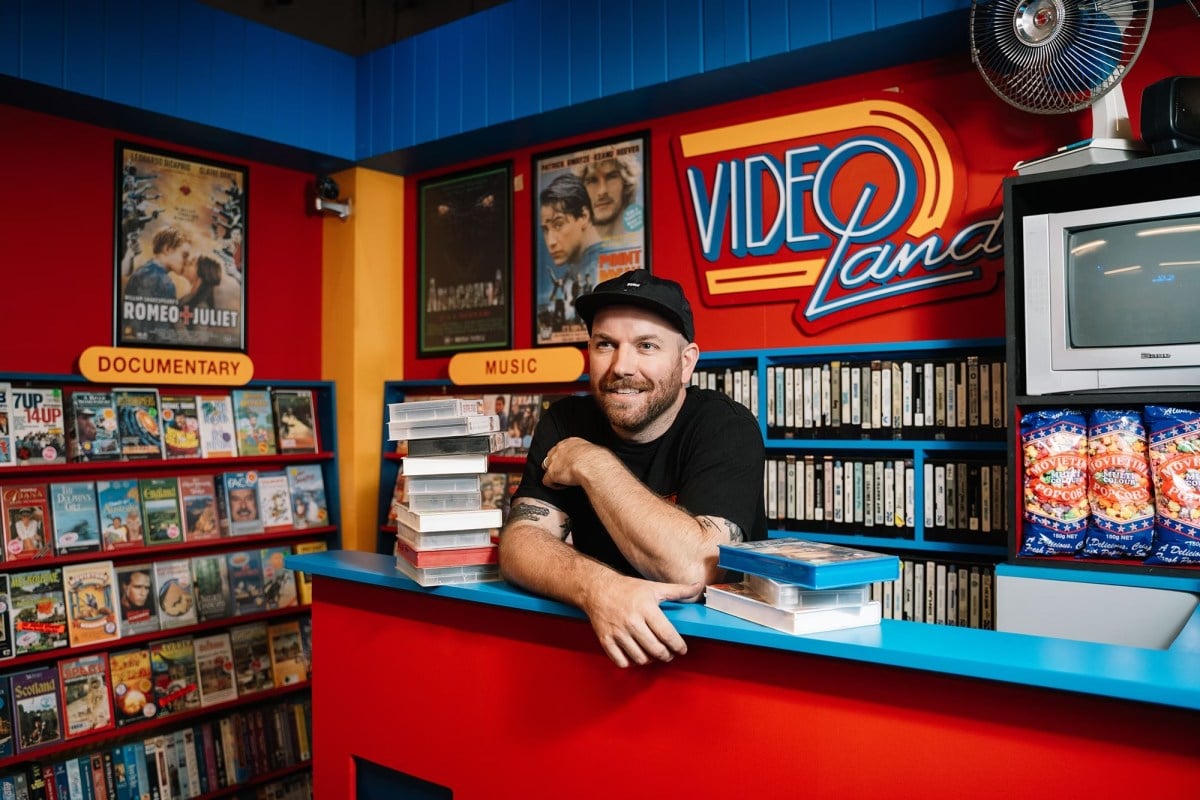
At Preston’s suggestion, the ELECTRIC ARCADIA commission developed into a collaboration, and immersive installation artist Louie Roots came on board.
‘I put play in public places,’ says Roots, who – until its closure in 2020 – ran Bar SK in Collingwood, showcasing local video games and playful art, and has had work presented at London’s Victoria and Albert Museum.
Alongside his art practice, Roots is the co-director of Freeplay Independent Games Festival, which supports the independent games sector in Australia. Roots had the right mix of DIY artistry and games industry knowledge to bring to the project.
ELECTRIC ARCADIA: Beyond Pac-Man
‘We wanted to have this arcade vibe, but also, we don’t want everyone to go in and just play Pac-Man. It’s been done,’ says Roots.
Roots’ advocacy and passion for local games is evident in ELECTRIC ARCADIA, where between classic Donkey Kong and Space Invaders arcades, you’ll find Bravecart by Sydney-based developer Hojo Studio and Bones Wandering Soul by Melbourne-based Studio Tinkerhaus.
‘I selected different games that had arcade vibes that were also contemporary local games. I think a good example is probably the Jupiter Junkworks, which is a Tetris-like type of game, and that was just going to be perfect for a cabinet.’
Indie games like Jupiter Junkworks by Australian studio Pixel Drake were custom built into arcade-style cabinets by artist Louie Roots, for ELECTRIC ARCADIA. Image: Tobias Titz.
Roots then set about talking to the developers, working out what would work best in the space, and then building the cases around the games themselves – complete with hand-painted skater-punk cabinets and colourful, light-up buttons and joysticks.
Preston, meanwhile, focused on the overall design of the space, the experience, and creating the look and feel of ELECTRIC ARCADIA.
ELECTRIC ARCADIA: building a dystopian lair
Under Preston’s hand, the concrete walls have been layered with story: hand painted to evoke the remnants of ghost signs and structural fissures; flyers and bills pasted up and peeling from the walls.
A carnival sign surrounded by green globes and coloured neon lights on the roof are set against the rows of arcade booths, creating an unearthly glow, while the plinks and plonks of the games’ soundtracks meld in polyphonic 8-bit disharmony. It feels lived in: littered and layered with the detritus of subcultures past.
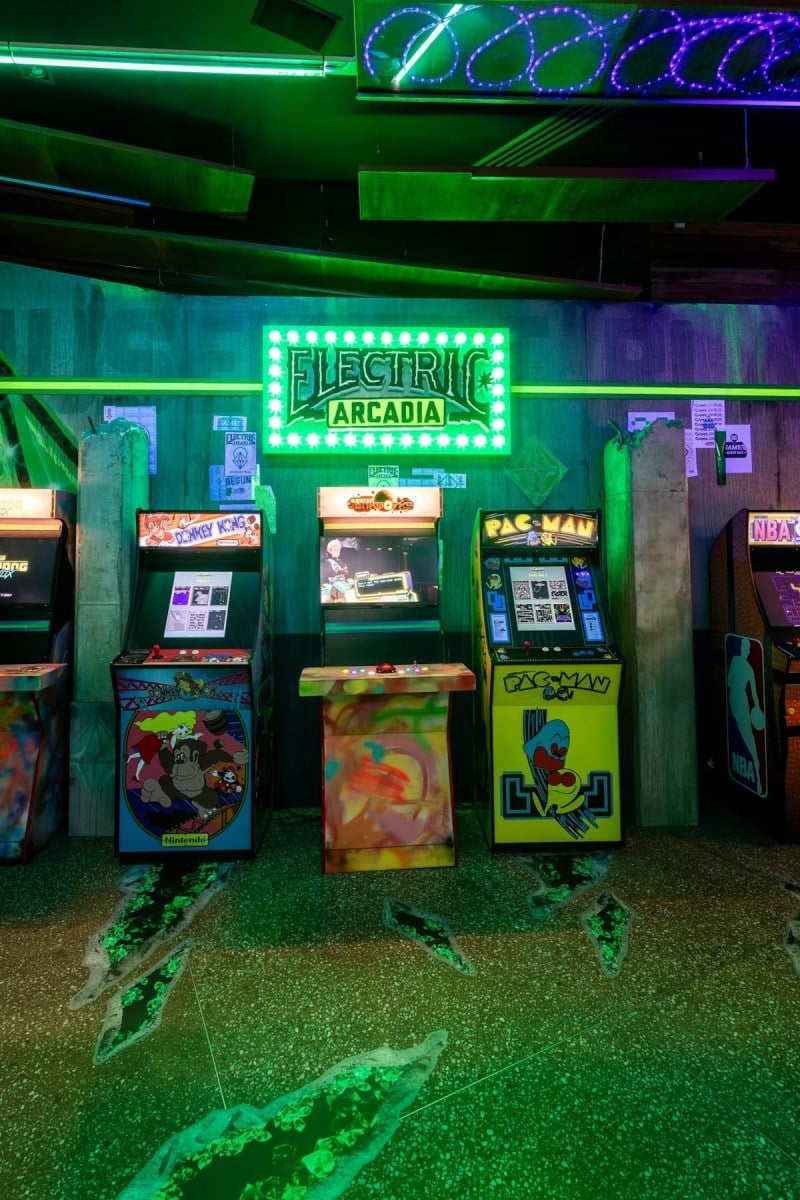
There’s a sense of something dystopian or retro-futuristic about the space, and Preston’s references are heavy on 80s sci-fi and adventure cult classics – from Blade Runner to Teenage Mutant Ninja Turtles and The NeverEnding Story.
‘For a young kid coming here, it almost feels a little bit underground, like they’re not supposed to be there,’ says Preston.
‘I would love to think that kids can go away and tell their friends: “We were in the city. Do you know there’s a really crazy bunker, like a Ninja Turtles lair?” I love the idea that they’re probably used to coming on school excursions and going to these official spaces in the city, and to see this one that’s a little bit cyberpunk, futuristic.’
‘I do love the challenge of converting something that is not what it was intended for,’ says Preston. ‘There’s probably people that’ll come along who have had dinner in this space before and all of a sudden they’re seeing it as this apocalyptic wasteland of arcade games.
‘And that’s really fun. I love turning things on their head a little bit and catching people by surprise.’
ELECTRIC ARCADIA: Heroing local games
At the front of the space, a leather bench seat – repurposed by Preston from a firesale of old Neighbours set pieces, and which once graced the long-running Australian soap’s local watering hole, Lassiters – sits in front of a large vintage rear-projection plasma screen. It’s here that visitors will be able to experience the first playable experience of BAFTA award-winning local indie designer Beethoven & Dinosaur’s upcoming game, Mixtape.
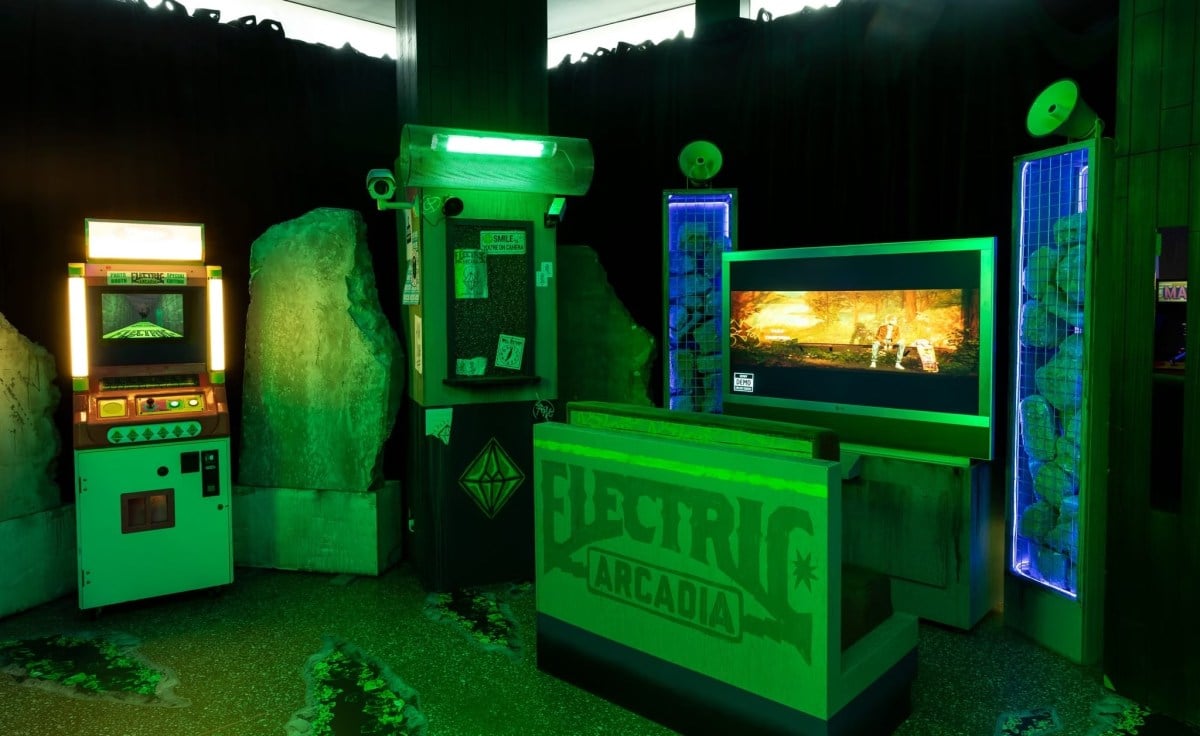
‘It’s very 90s Northwest American vibes, coming of age movie, party, end of school, life changes,’ says Roots, ‘but also with this huge emphasis on the soundtrack because Johnny, the director, has a strong music background.
‘I love it. I think it’s a really nice take on: how do you make [80s film] Ferris Bueller into a video game?’
ELECTRIC ARCADIA: the art of nostalgia
The sense of a gritty underworld subculture permeates the walls in ELECTRIC ARCADIA, and the experience is grounded in a sense of nostalgia – 80s and 90s film references, retrofuturism, adventure and fantasy, and the joy of losing time in an arcade.
‘The things that feel nostalgic to me are things from my childhood,’ says Preston, ‘but then as the years fly past, you’re nostalgic for the early 2020s all of a sudden. It’s such a strange ever-growing catalog of nostalgia.
‘But yeah, definitely for me, it’s probably the ‘simpler time’ concept. Before you wake up and check your email every day. Before you were accessible 24/7 by phone. I think that’s probably my golden era of nostalgia, just those hours between finishing school and having dinner. It seemed like a whole day’s worth of stuff could happen in that couple of hours.
‘I think that things like Mixtape, and obviously just games in general, really remind me of that period.
‘But also, I think the importance of play as adults, not just children, is really important.’
While Roots and Preston hadn’t worked together before ELECTRIC ARCADIA, they’re united in their interest in repurposing old things, in creating art that’s touchable, playable, and which connects to something that feels authentic and human.
‘It’s like the space has a lot of history, and it’s got layers of eras built up upon it,” says Preston. “There’s little Easter eggs hidden around and there’s security cameras and air horn sirens and concrete rubble. It’s a little bit interactive, even if you’re not playing the games.’
‘I want people to be able to go in and touch everything,’ says Roots. ‘When you look at an arcade controller versus a, I don’t know, a PlayStation controller – if you press the middle button, you accidentally go back to the desktop. Whereas with an arcade controller, everything that’s there is for you to play with and no one’s telling you what it is. You explore. You go as hard as you want. If the game tells you to mash a button, you mash a button.’
ELECTRIC ARCADIA: celebrating DIY culture
‘Melbourne is a huge hub for games,’ says Roots. ‘It is the leading place in Australia for games, and one of the global centres – especially for independent and small creators.’
‘I think when you showcase local games, it’s really important to let people know that they’re made by the people in your neighbourhood, and that the next game could be yours if you want.’
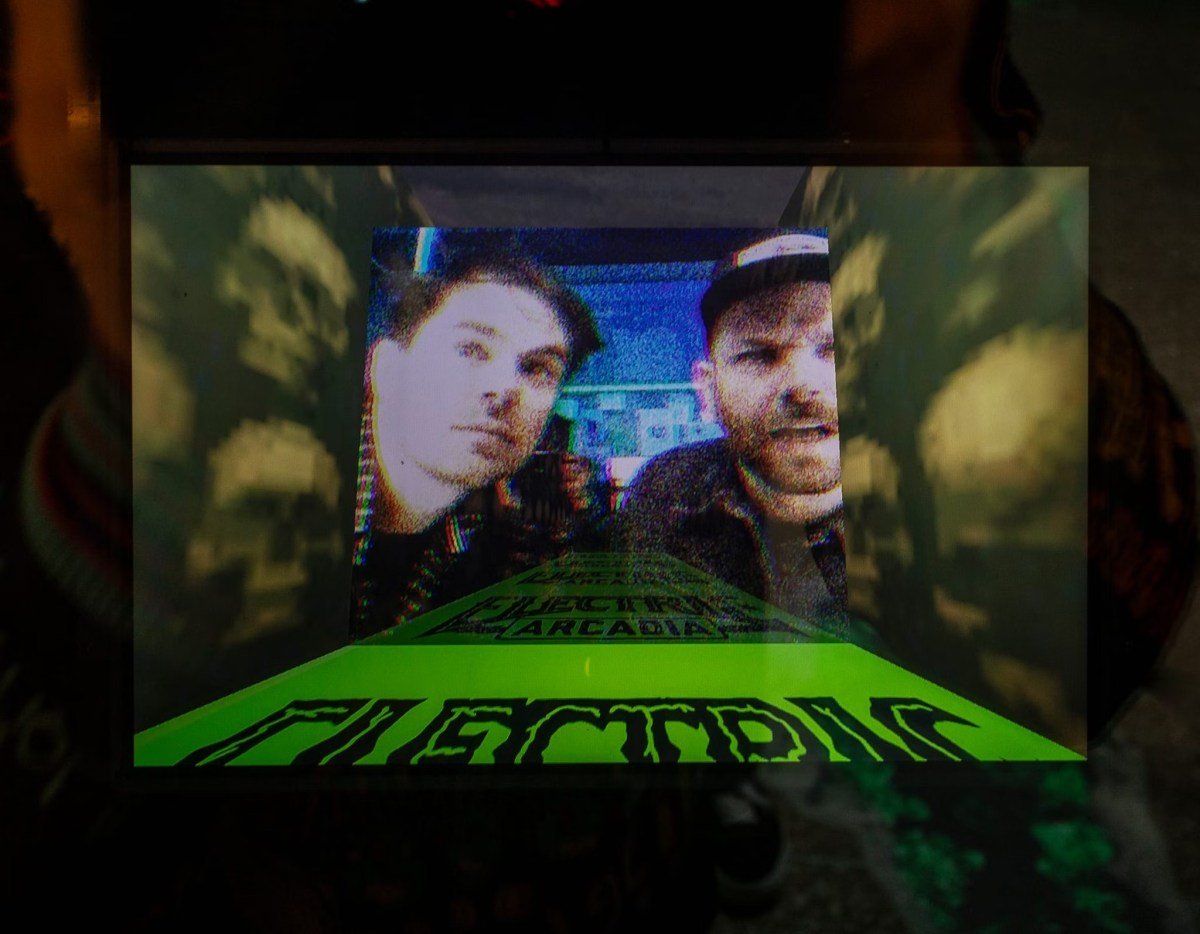
One of the non-game elements in the space is an arcade-style photo booth. Roots created it in a couple of nights, using spare parts and game engines, and just figuring it out.
‘It’s a very janky photobooth thing,’ says Roots, ‘but again, it’s saying: you could make that.’
‘I love the DIY culture growth,’ says Preston, ‘and that’s what I feel like we are trying to really put on a pedestal in a space like this. Everyone’s welcome, but it’s got that grunginess. It’s not not gate-kept in that sort of sterile way. It’s very loose.’
ELECTRIC ARCADIA is open at Fed Square as part of Melbourne International Games Week from 3–9 October, presented by Creative Victoria in partnership with Fed Square.
This article is republished from Fed Square – see the original article.
